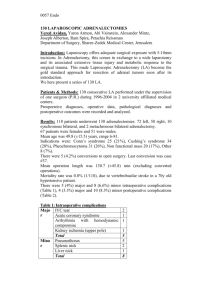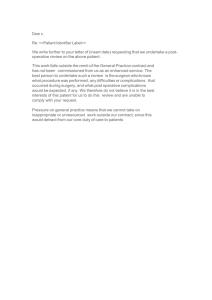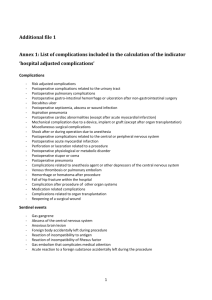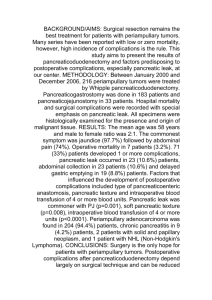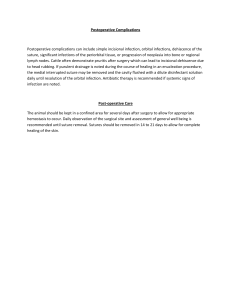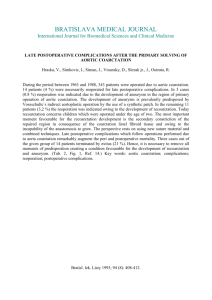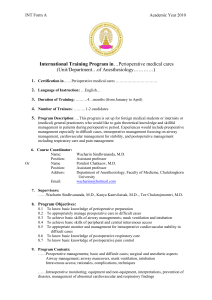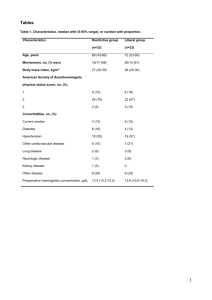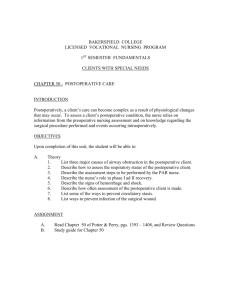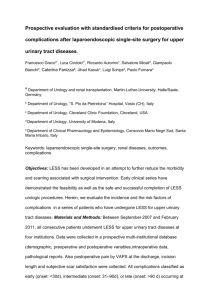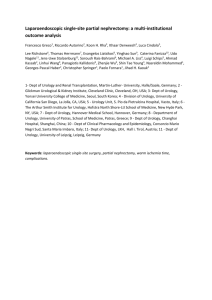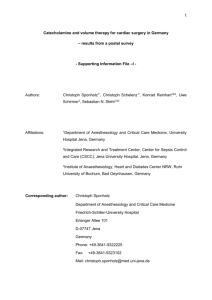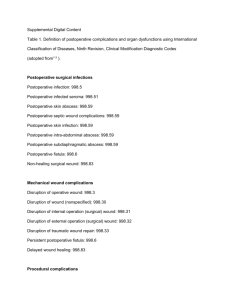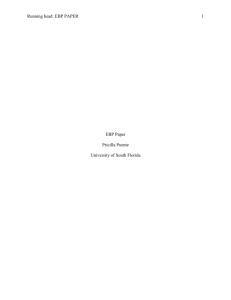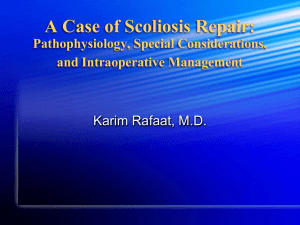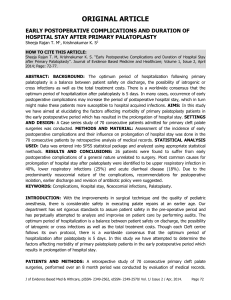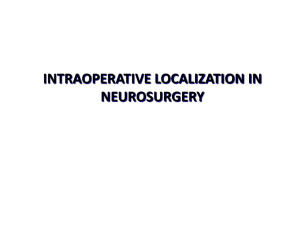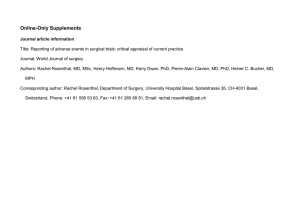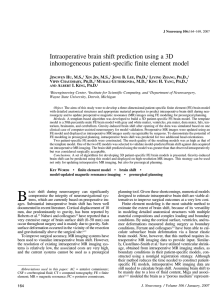Intraoperative and postoperative complications of laparoscopic
advertisement
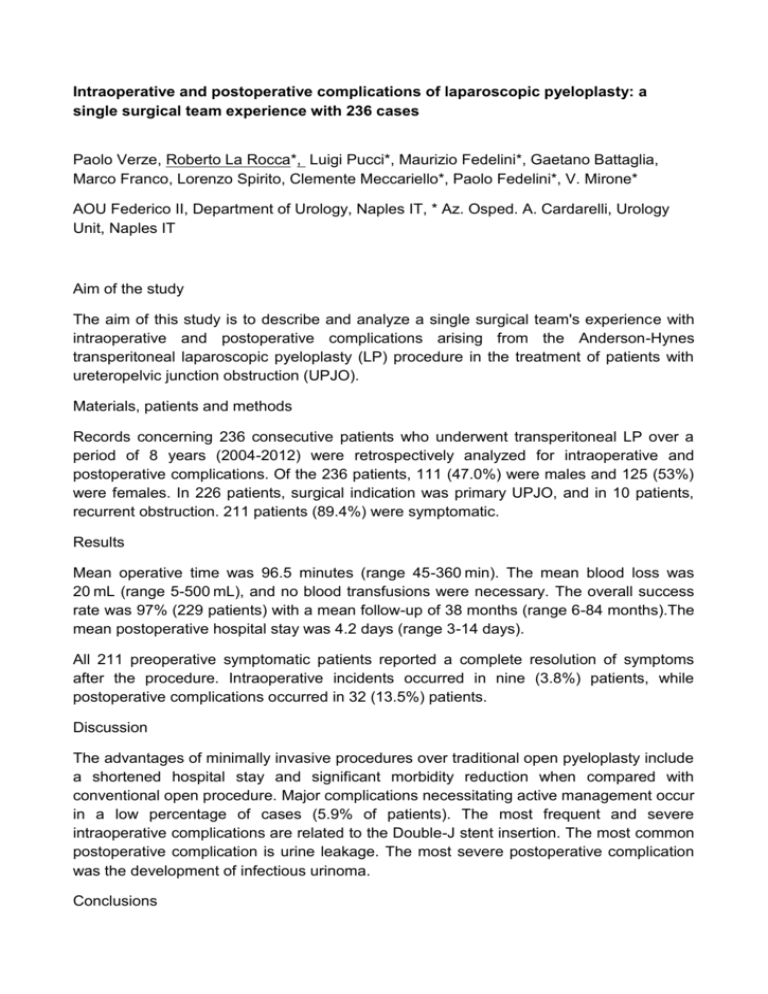
Intraoperative and postoperative complications of laparoscopic pyeloplasty: a single surgical team experience with 236 cases Paolo Verze, Roberto La Rocca*, Luigi Pucci*, Maurizio Fedelini*, Gaetano Battaglia, Marco Franco, Lorenzo Spirito, Clemente Meccariello*, Paolo Fedelini*, V. Mirone* AOU Federico II, Department of Urology, Naples IT, * Az. Osped. A. Cardarelli, Urology Unit, Naples IT Aim of the study The aim of this study is to describe and analyze a single surgical team's experience with intraoperative and postoperative complications arising from the Anderson-Hynes transperitoneal laparoscopic pyeloplasty (LP) procedure in the treatment of patients with ureteropelvic junction obstruction (UPJO). Materials, patients and methods Records concerning 236 consecutive patients who underwent transperitoneal LP over a period of 8 years (2004-2012) were retrospectively analyzed for intraoperative and postoperative complications. Of the 236 patients, 111 (47.0%) were males and 125 (53%) were females. In 226 patients, surgical indication was primary UPJO, and in 10 patients, recurrent obstruction. 211 patients (89.4%) were symptomatic. Results Mean operative time was 96.5 minutes (range 45-360 min). The mean blood loss was 20 mL (range 5-500 mL), and no blood transfusions were necessary. The overall success rate was 97% (229 patients) with a mean follow-up of 38 months (range 6-84 months).The mean postoperative hospital stay was 4.2 days (range 3-14 days). All 211 preoperative symptomatic patients reported a complete resolution of symptoms after the procedure. Intraoperative incidents occurred in nine (3.8%) patients, while postoperative complications occurred in 32 (13.5%) patients. Discussion The advantages of minimally invasive procedures over traditional open pyeloplasty include a shortened hospital stay and significant morbidity reduction when compared with conventional open procedure. Major complications necessitating active management occur in a low percentage of cases (5.9% of patients). The most frequent and severe intraoperative complications are related to the Double-J stent insertion. The most common postoperative complication is urine leakage. The most severe postoperative complication was the development of infectious urinoma. Conclusions Our retrospective analysis confirms that LP is an efficacious and safe procedure resulting in a reported success rate of 97% and a concomitant low level of intraoperative (3.8%) and postoperative complications (13.5%).
